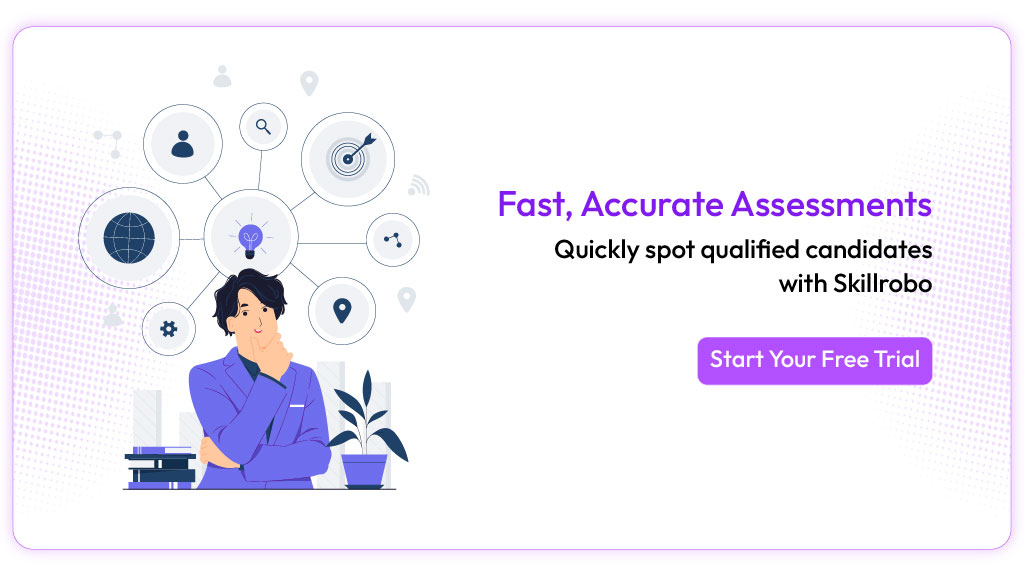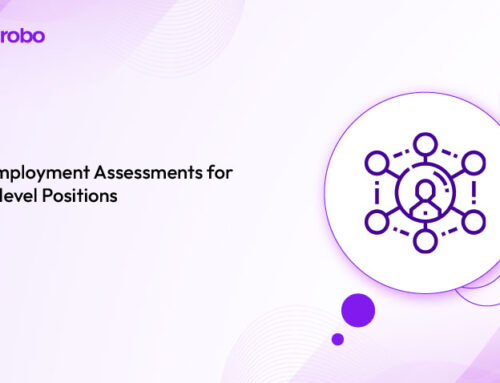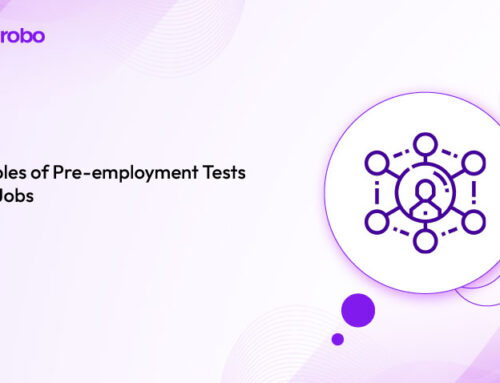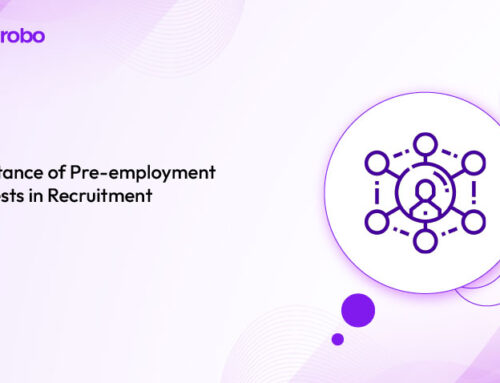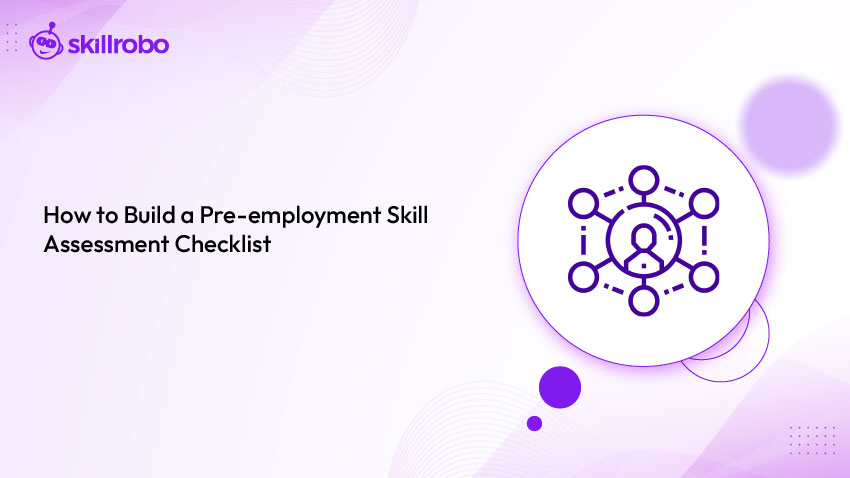
Key Takeaways
- A checklist standardizes evaluations, reducing bias and ensuring hires align with role-specific needs for consistent hiring success.
- Streamlined assessments save time and costs, filtering top talent efficiently while minimizing errors from overlooked skills.
- Clear checklists enhance candidate experience, signaling professionalism and transparency to boost your employer brand.
- Data-driven benchmarks and metrics optimize assessments, enabling confident hiring decisions for high-performing teams.
Hiring the right talent is one of the most critical—and challenging—tasks for any organization. Without structure, hiring becomes a guessing game, often leading to mis-hires, wasted time, and low retention. That’s where a pre-employment skill assessment checklist comes in. It brings clarity and consistency to your process, ensuring candidates are evaluated based on real job requirements, not assumptions. Whether you’re hiring for technical, creative, or customer-facing roles, a well-structured checklist ensures alignment, fairness, and better hiring outcomes. In this blog, we’ll walk you through how to build a pre-employment skill assessment checklist effectively—from key components to real-world applications.
Why a Skill Assessment Checklist Is Essential
A checklist transforms chaotic hiring into a structured, fair process, ensuring no skill slips through the cracks. Here’s why it’s indispensable:
1. Ensures Consistent Evaluations
A checklist standardizes assessments, minimizing subjectivity. A retailer hiring cashiers can uniformly test speed and accuracy, ensuring fairness. Use clear criteria, like task completion time, to maintain objectivity. Consistency builds trust and defends against biased claims, with 78% of HR leaders prioritizing standardized processes. Regularly audit your checklist to ensure it remains equitable and relevant across diverse candidate pools, strengthening your hiring credibility.
2. Aligns Skills with Job Needs
Map assessments to role-specific requirements for better hires. For a logistics coordinator, prioritize data entry speed over creative writing. Review job descriptions and consult team leads to pinpoint must-have skills, ensuring tests mirror real-world tasks. This alignment boosts retention by hiring candidates ready to excel from day one. A misaligned hire, like a planner lacking analytical skills, can derail projects, costing time and resources. Update checklists as roles evolve to stay relevant.
3. Saves Time and Resources
Streamlined screening cuts down on lengthy interviews, saving valuable resources. A tech firm assessing coders can prioritize debugging tasks, quickly filtering unqualified applicants. Leverage candidate assessment tools to automate and scale evaluations, allowing you to focus on top talent. Automation reduces manual review time by up to 30%, letting HR teams handle high applicant volumes efficiently. [General Knowledge, 2024] Ensure tools integrate with your ATS for seamless workflows.
4. Reduces Hiring Errors
Without a checklist, critical skills can be overlooked, leading to costly mis-hires. A firm hiring planners might miss analytical skills, causing project delays. Checklists act as a safety net, ensuring all competencies are tested thoroughly. Regularly update criteria based on role changes or industry trends to maintain relevance. For example, a retailer might add digital literacy tests as POS systems evolve, preventing hires who can’t adapt to new tools from slipping through.
5. Enhances Candidate Experience
A clear checklist signals professionalism, setting expectations upfront. Customer service candidates appreciate knowing they’ll face empathy-focused scenarios, reducing anxiety. Provide guides or sample tasks to ease preparation, improving perceptions of your brand. A positive experience attracts top talent and strengthens your employer reputation, especially in competitive markets. Collect post-assessment feedback to refine clarity, ensuring candidates feel valued and engaged throughout the hiring process.
Key Components of an Effective Checklist
A robust checklist is comprehensive yet focused, covering essentials for thorough evaluation. Here are five critical components:
1. Role-Specific Skill Criteria
Identify skills tied to job functions for targeted assessments. For a financial analyst, test Excel proficiency and data interpretation. Use Excel assessment tests to set benchmarks, like pivot table creation in under five minutes. Clear criteria ensure measurable, relevant evaluations that predict on-the-job success. Collaborate with department heads to validate skills, avoiding generic tests that miss role nuances. Regularly update criteria to reflect evolving job demands.
2. Assessment Method Variety
Incorporate diverse formats—simulations, scenarios, tasks—for holistic evaluation. A sales rep might face a role-play to gauge persuasion, paired with a written pitch for clarity. Varied methods capture both technical and soft skills, reflecting real-world demands. For example, a logistics role might include inventory tracking simulations alongside teamwork scenarios. Ensure methods are accessible, offering accommodations like extra time for candidates with disabilities to maintain fairness and inclusivity.
3. Scoring and Benchmark Standards
Define clear rubrics to evaluate performance consistently. For data entry, set 50 WPM with 98% accuracy as a benchmark. Transparent standards, outlined in clerical skills testing, ensure fairness and clarify expectations, reducing disputes. Use industry data or past hire performance to set realistic targets. Share scoring criteria with candidates upfront to build trust and help them prepare, fostering a positive experience while maintaining rigorous evaluation standards.
4. Bias Mitigation Measures
Use neutral language and diverse scenarios to minimize bias. For a project manager, test planning across industries to avoiding cultural assumptions. Regularly audit checklists for unintended bias, like region-specific terms that alienate candidates. Train evaluators to recognize and address bias during scoring. Inclusive design ensures all candidates have an equal shot, strengthening diversity in hires and aligning with fair hiring practices championed by tools with fair hiring solutions.
5. Feedback Mechanisms
Incorporate ways to collect candidate feedback on assessments. A retailer might ask applicants about test clarity post-evaluation. Use insights to refine instructions or adjust benchmarks, ensuring accessibility and relevance. Feedback loops also signal that you value candidate perspectives, enhancing their experience. Implement anonymous surveys to encourage honest input, and analyze trends to identify recurring issues, like confusing scenarios, that could undermine the checklist’s effectiveness.
Steps to Build Your Checklist
Creating a checklist requires strategic planning to ensure it’s practical and effective. Follow these steps:
Step 1 – Analyze Job Requirements
Break down the role into core tasks to identify key skills. For a customer support rep, prioritize communication and problem-solving. Consult team leads to understand what drives success, ensuring assessments reflect daily responsibilities. Map tasks to measurable outcomes, like resolving queries in under five minutes. This step prevents generic tests that fail to capture role nuances, setting the foundation for a targeted checklist.
Step 2 – Select Relevant Assessment Tools
Choose tools that match job needs for efficient evaluations. For coders, use pre-employment assessment tests with debugging scenarios. Ensure tools are user-friendly and scalable to handle high applicant volumes. Test tools for compatibility with your ATS to streamline workflows. Pilot tools with a small group to confirm they accurately assess skills without introducing bias or technical glitches.
Step 3 – Define Success Metrics
Set measurable benchmarks to evaluate performance. A logistics role might require 95% accuracy in inventory tracking. Use industry standards or past hire data to establish realistic targets. For example, a retailer might benchmark cashier speed at 30 transactions per hour. Clear metrics ensure consistent scoring and help candidates understand expectations, fostering transparency. Regularly review metrics to align with evolving role demands.
Step 4 – Incorporate Soft Skills
Test interpersonal traits like teamwork or adaptability alongside technical skills. For a team lead, include group scenario tasks to assess collaboration. Use psychometric assessment tests to gauge emotional intelligence, ensuring well-rounded hires. Balance soft and hard skills in the checklist to predict cultural fit and long-term success. Avoid overemphasizing technical skills at the expense of team dynamics.
Step 5 – Pilot and Refine
Test the checklist with a small candidate pool to identify flaws. A firm hiring planners might pilot analytical tasks, adjusting based on feedback about unclear instructions. Refine benchmarks or scenarios to optimize accuracy and fairness. Conduct multiple pilots if roles are complex, like leadership positions, to ensure the checklist captures all critical skills. Use pilot data to finalize a robust, reliable tool.
Applications Across Roles
Checklists adapt to diverse roles, ensuring tailored assessments. Here’s how they apply:
1. Customer-Facing Roles
For reps, test empathy and clarity via role-plays. A retailer might simulate handling complaints to ensure hires excel in high-pressure interactions. Checklists standardize communication evaluations, ensuring consistency across large applicant pools. Include scenarios reflecting common customer issues to predict on-the-job performance accurately.
2. Technical Roles
Coders need debugging and logic tests. A tech firm can use coding scenarios to assess problem-solving under time constraints. Checklists align tasks with role-specific frameworks, ensuring technical proficiency. Incorporate real-world problems, like fixing a payment gateway bug, to test practical skills effectively.
3. Administrative Roles
Data entry roles require speed and accuracy tests. A logistics firm might assess form-filling under time constraints. Checklists standardize benchmarks, like 50 WPM, streamlining high-volume hiring. Use simulations mimicking daily tasks to ensure hires can handle repetitive workloads with minimal errors.
4. Leadership Roles
Team leads need planning and decision-making assessments. Use scenarios for testing conflict resolution or resource allocation. Checklists ensure a comprehensive evaluation of strategic and interpersonal skills. Include tasks like prioritizing project milestones to gauge leadership under pressure, ensuring hires drive team success.
5. Creative Roles
Designers require portfolio reviews and task-based tests. A marketing firm might assess campaign ideation under tight deadlines. Checklists balance creativity and technical skills, like proficiency in design software, for well-rounded hires. Ensure tasks allow candidates to showcase innovation while meeting role-specific criteria.
Avoiding Common Pitfalls
Even strong checklists can falter without care. Avoid these traps to maintain effectiveness:
1. Overcomplicating Assessments
Complex tests overwhelm candidates, skewing results. A retailer testing cashiers should avoid intricate scenarios unrelated to daily tasks. Keep assessments simple, focusing on core skills like transaction speed. Clear instructions and relevant tasks ensure candidates can demonstrate their abilities without unnecessary hurdles.
2. Ignoring Soft Skills
Overemphasizing technical skills can neglect teamwork or adaptability. A tech firm hiring coders should test collaboration via group tasks. Balanced checklists ensure hires thrive in team settings, not just individual tasks. Include scenarios assessing communication or conflict resolution to predict cultural fit.
3. Neglecting Updates
Outdated checklists miss evolving job needs. A firm hiring analysts should refresh Excel tasks for new software versions. Review checklists quarterly to stay relevant, using workforce optimization tools. Regular updates prevent hires who lack current skills from slipping through.
4. Bias in Design
Culturally specific scenarios alienate candidates. Use universal tasks, like planning a generic project, to ensure inclusivity. Audit checklists for region-specific terms or assumptions. Train evaluators to score consistently, avoiding bias that could undermine diversity and fairness in hiring.
5. Lack of Candidate Feedback
Without input, unclear tests persist. A firm might learn that data entry tasks confuse applicants only through feedback. Collect post-assessment surveys to refine clarity and accessibility. Anonymous feedback encourages honesty, helping you address issues like confusing instructions that impact candidate performance.
Conclusion
A pre-employment skill assessment checklist is your key to building high-performing teams with precision. By standardizing evaluations, aligning skills with roles, and minimizing errors, it transforms hiring into a strategic advantage. Tools like Skillrobo streamline this process, offering tailored assessments to identify top talent efficiently. With 65% of employers reporting improved retention through structured assessments, the impact is undeniable. Start crafting your checklist today to ensure every hire drives success. Sign up and explore Skillrobo’s solutions and elevate your hiring game.

